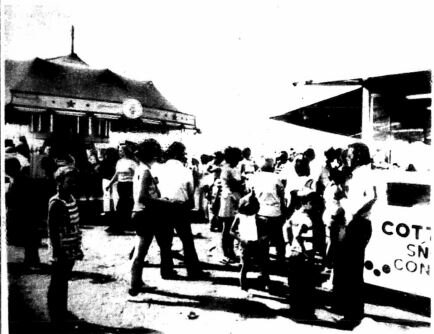The St Joseph Catholic Church was said to have been the focal point of the community of St Joe. Jeanette Robling, a lifelong resident of Sand Creek Township, said in 1887, “It was really the church that made the community. There never was a business district. All community centered around the church.”
St Joe’s Church was located at the intersection of county roads 71 and 10 in Sand Creek. The story goes that a group of early settlers wrote to the Bishop in St Paul to request permission to build a local church. They heard that their request might be refused because of their proximity to Jordan which was also building a Catholic church at the time. Supposedly, a farmer came out with his wagon to meet the Bishop when he came to inspect the area. Instead of taking a direct route back to the community of St Joe, the farmer drove the Bishop along a circuitous and bumpy back route. St Joe seemed farther from Jordan then it actually was, and the Bishop gave permission for the church to be built.
St Joe’s Church was established in 1858, with the first day of work on January 11th. It was built entirely by community volunteers and, due to farming and family obligations, was not finished until the following October. The original building was a 24’x35’ log cabin, not dissimilar to the residences in St Joe at the time. The first priest was Father Eberhard. In 1860 a bell, cast in St Louis, was purchased for the church by the local Young Men’s Society
In 1873, this cabin was replaced by a sandstone church building. For the next two years the priest was Father Duestermann. After that the Franciscan Order took over church management.
Exterior of St Joe’s Church. From the Prior Lake American, September 7th, 1987
In 1874 a school opened on site, run by an order of nuns, with 60 students in attendance. The school consisted of only two rooms, with two teachers on staff. Attendance for each student averaged only 50-60 days per year due to farm work, illness and weather. By 1883, 106 children were enrolled. Unfortunately, this proved to be a difficult year for the school. Several students died in an epidemic, and the school closed for a large portion of the year as a protective measure. In 1884, the nuns retired and the building became the District 22 public school. The building was still shared with the church for religious instruction until 1947. It remained in operation until 1960, when the district combined with Jordan.
A tower was added to St Joe’s Church in 1925, and electric lights were installed in 1938. The church held its first “annual bazaar” in celebration.
St Joe’s Church stood for over 100 years. The last mass in the building was held in June of 1971, and officiated by Father Rogers. Many in the congregation were sad to see the church go. There was actually a lawsuit around the decision, based on the fact that the original donors of the land had given it for “church, charitable and educational purposes.” The final ruling was that when the deed was turned over to the Franciscan Order in 1875, this original intent was voided, and the church could be closed and the land sold.
Items from inside the church were auctioned off in February of 1972, and the resulting funds were put into place to preserve the church cemetery. The old teachers residence was torn down to provide parking. Finally, the church itself was removed in 1988.
In June of 1989 a memorial to the church was dedicated on site featuring the old church bell. The inscription reads “St Joseph's Catholic Church. On this spot stood St Joseph's Catholic Church. This monument is dedicated in memory of those who worshiped here and supported the church for 113 years. The bell is original. The stone and brick are from the church.”
The end of the church also marked the end of St Joe. Never a large community, it began to disperse after the church closed. Today it is considered a ghost town.








